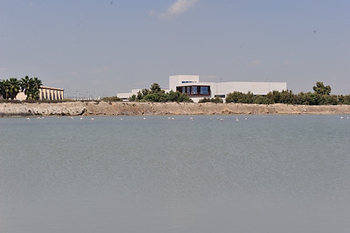Find more information by AREA, TOWN or URBANISATION .....
Cabo de Palos
Cartagena
El Carmoli
Islas Menores and Mar de Cristal
La Manga Club
La Manga del Mar Menor
La Puebla
La Torre Golf Resort
La Union
Los Alcazares
Los Belones
Los Nietos
Los Urrutias
Mar Menor Golf Resort
Pilar de la Horadada
Playa Honda / Playa Paraiso
Portman
Roldan and Lo Ferro
San Javier
San Pedro del Pinatar
Santa Rosalia Lake and Life resort
Terrazas de la Torre Golf Resort
Torre Pacheco
Cartagena
El Carmoli
Islas Menores and Mar de Cristal
La Manga Club
La Manga del Mar Menor
La Puebla
La Torre Golf Resort
La Union
Los Alcazares
Los Belones
Los Nietos
Los Urrutias
Mar Menor Golf Resort
Pilar de la Horadada
Playa Honda / Playa Paraiso
Portman
Roldan and Lo Ferro
San Javier
San Pedro del Pinatar
Santa Rosalia Lake and Life resort
Terrazas de la Torre Golf Resort
Torre Pacheco
Aguilas
Aledo
Alhama de Murcia
Bolnuevo
Camposol
Condado de Alhama
Fuente Alamo
Hacienda del Alamo Golf Resort
Lorca
Mazarron
Puerto de Mazarron
Puerto Lumbreras
Sierra Espuna
Totana
Aledo
Alhama de Murcia
Bolnuevo
Camposol
Condado de Alhama
Fuente Alamo
Hacienda del Alamo Golf Resort
Lorca
Mazarron
Puerto de Mazarron
Puerto Lumbreras
Sierra Espuna
Totana
Abanilla
Abaran
Alcantarilla
Archena
Blanca
Corvera
El Valle Golf Resort
Hacienda Riquelme Golf Resort
Lorqui
Molina de Segura
Mosa Trajectum
Murcia City
Peraleja Golf Resort
Ricote
Sucina
Abaran
Alcantarilla
Archena
Blanca
Corvera
El Valle Golf Resort
Hacienda Riquelme Golf Resort
Lorqui
Molina de Segura
Mosa Trajectum
Murcia City
Peraleja Golf Resort
Ricote
Sucina
Urbanisations
CamposolCondado de Alhama
El Valle Golf Resort
Hacienda del Alamo Golf Resort
Hacienda Riquelme Golf Resort
Islas Menores and Mar de Cristal
La Manga Club
La Torre Golf Resort
Mar Menor Golf Resort
Mazarron Country Club
Mosa Trajectum
Peraleja Golf Resort
Santa Rosalia Lake and Life resort
Terrazas de la Torre Golf Resort
La Zenia
Lomas de Cabo Roig

Important Topics:
CAMPOSOL TODAY Whats OnCartagena SpainCoronavirusCorvera Airport MurciaMurcia Gota Fria 2019Murcia property news generic threadWeekly Bulletin
CAMPOSOL TODAY Whats OnCartagena SpainCoronavirusCorvera Airport MurciaMurcia Gota Fria 2019Murcia property news generic threadWeekly Bulletin



 There´s very little in the way of physical evidence of historical data relating directly to the pedanía of Los Imbernones, although the key events in the history of the municipality as a whole ( see History of San Pedro del Pinatar) will undoubtedly have played out in the pedanía as well.
There´s very little in the way of physical evidence of historical data relating directly to the pedanía of Los Imbernones, although the key events in the history of the municipality as a whole ( see History of San Pedro del Pinatar) will undoubtedly have played out in the pedanía as well. It´s proximity to the pedanías of El Mojón, the Salinas and the Mar Menor itself mean that Phoenician, Greek, Carthaginian and Roman cultures all passed through, bearing cargoes of silver, lead, esparto, salt and saltfish products, leaving traces of their passage in neighbouring pedanías.
It´s proximity to the pedanías of El Mojón, the Salinas and the Mar Menor itself mean that Phoenician, Greek, Carthaginian and Roman cultures all passed through, bearing cargoes of silver, lead, esparto, salt and saltfish products, leaving traces of their passage in neighbouring pedanías. By the 15th century it had become the main port serving Murcia, and wheat arrived here to feed the population of the region. It was the city of Murcia which was in charge of the administration of the fishing activities and fish markets, and the area suffered depopulation in the 16th and 17th centuries when the coastal zones were made insecure by the frequent Berber pirate raids.
By the 15th century it had become the main port serving Murcia, and wheat arrived here to feed the population of the region. It was the city of Murcia which was in charge of the administration of the fishing activities and fish markets, and the area suffered depopulation in the 16th and 17th centuries when the coastal zones were made insecure by the frequent Berber pirate raids. The start of the 19th century was marked by a series of disasters, including droughts which brought hunger and occasional torrential rain which flooded the area.
The start of the 19th century was marked by a series of disasters, including droughts which brought hunger and occasional torrential rain which flooded the area. In the course of the 20th century the population of San Pedro del Pinatar continued to work in fishing and agriculture, although farming became more and more difficult due to droughts and the lack of available land.
In the course of the 20th century the population of San Pedro del Pinatar continued to work in fishing and agriculture, although farming became more and more difficult due to droughts and the lack of available land. The economy of Los Imbernones is based on the salt industry which provides employment to a large percentage of the population, as well as the service sector, working in the hotels, bars and restaurants which cater for tourism visitors.
The economy of Los Imbernones is based on the salt industry which provides employment to a large percentage of the population, as well as the service sector, working in the hotels, bars and restaurants which cater for tourism visitors.